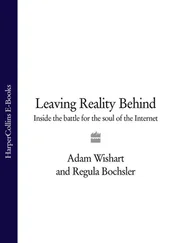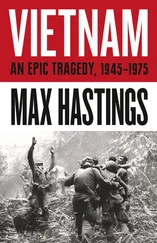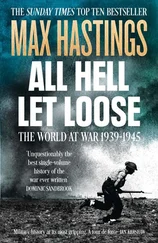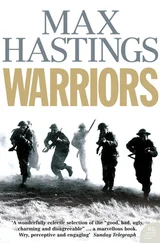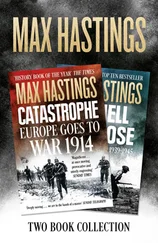Because no minutes were taken of Roosevelt’s meetings with his commanders, uncertainty has persisted about exactly what was said. The historical narrative relies on fragmentary and highly partial accounts by the participants. ‘Douglas, where do we go from here?’ Roosevelt asked. This form of address must have irked MacArthur, who signed even letters to his wife Jean with his surname. ‘Leyte, Mr President, and then Luzon!’ was the recorded response, naming two of the foremost Philippine islands. These exact words are implausible, for at that stage US plans called for an initial landing further south, on Mindanao. The thrust of MacArthur’s argument is not in doubt, however. He asserted, as he had done since 1942, that strategic wisdom and national honour alike demanded the liberation of the Filipino people, whose territory would then become the principal stepping stone for the invasion of Japan.
In October 1943, the joint chiefs had allocated the US Navy its own route across the central Pacific via the Marshall, Caroline and Mariana islands, assaulted principally by Marine divisions, while MacArthur’s soldiers advanced by way of the Solomons, the Bismarck Archipelago, and the hills and jungles of Papua-New Guinea. All these objectives were now achieved. The names of their torrid conquests had become written in blood into American history: Guadalcanal and Kwajalein, Tarawa, Saipan and Guam. Each had been the scene of a contest for a few square miles of rock or coral on which to create airstrips and anchorages to support the greatest fleets the world had ever seen. The Pacific war was fought almost entirely within gunshot of the sea. Amid the vast, empty expanses of the world’s largest ocean, men flung themselves upon outcrops of land, painted livid green by vegetation, with a passion mocked by their coarse beauty. In the first eighteen months of the conflict, though Japan’s supply lines were grossly over-extended, her armed forces engaged the Americans on not unequal terms. Until late 1943, for instance, the US Pacific Fleet never possessed more than four aircraft carriers. Thereafter, however, American strength soared, while that of Japan shrank.
A host of ships, planes, men and guns flooded west from the US to the battlefields. At peak production in March 1944, an aircraft rolled out of an American factory every 295 seconds. By the end of that year, almost one hundred US aircraft carriers were at sea. American planes and submarines were strangling Japanese supply routes. It had become unnecessary systematically to destroy Japan’s Pacific air bases, because the enemy possessed pitifully few planes to use them. Between 26 December 1943 and 24 October 1944, Japanese aircraft failed to sink a single significant American ship. Similarly, surviving Japanese army garrisons presented no threat, for Tokyo no longer had means to move or supply them. But even when the Japanese strategic predicament was hopeless, when resistance became—by Western lights—futile, their soldiers fought to the last. These desperate battles reflected, in some degree, the warrior ethic of bushido. Overlaid upon this, however, was a rational calculation by Tokyo. The superiority of American resources was manifest. If Japan pursued the war within the limits of conventional military behaviour, its defeat was inevitable. Its leaders’ chosen course was to impose such a ghastly blood price for each American gain that this ‘nation of storekeepers’ would find it preferable to negotiate, rather than accept the human cost of invading Japan’s main islands. If such a strategy was paper-thin, and woefully underestimated American resolution, it determined Japanese conduct by land, sea and air until August 1945.
‘No matter how a war starts, it ends in mud,’ wrote Gen. ‘Vinegar Joe’ Stilwell. ‘It has to be slugged out—there are no trick solutions or cheap shortcuts.’ There was, and remains, no doubt that this was true of the war against Germany. But did it also apply to the war against Japan? The enemy was an island nation. If the US Navy could secure sufficient Pacific footholds to provide air and naval basing facilities on the route to Japan, was it also necessary to fight a major ground campaign? It had been America’s historic intention to conduct any war with Japan at sea and in the air, rather than by land battle. Whatever the achievements of US ground forces since Pearl Harbor, the decisive victories had been secured by the navy—Midway and the progressive attrition of Japan’s air and naval forces. While American strategic planning assumed eventual amphibious landings in the Japanese home islands, it remained the fervent hope of most commanders that blockade and air bombardment would render these unnecessary.
There was only one messianic advocate of a major campaign to retake the Philippines: MacArthur. While others varied their opinions in the face of changing circumstances, the general never did. It is possible that beyond ego, a worm of guilt gnawed, about his own conduct in 1941-42. Albeit under presidential orders, he had abandoned his Philippines command to barbarous captivity, to flee with his personal staff, family, nanny and dubiously-acquired fortune to safety in Australia. Now, when other commanders’ eyes flitted between alternative objectives in the western Pacific, his own never wavered. King, an officer as imperious as MacArthur, favoured bypassing the Philippines, approaching Japan by way of its offshore island possessions, Formosa and Okinawa. Formosa presented a much smaller target than the mass of the Philippines, with the additional attraction of opening a gateway to the Chinese mainland.
The US Army’s War Plans Department concluded as far back as 1923 that, if America’s Philippines bases were lost in the early stages of a conflict, their recapture would be ‘a long and costly undertaking’. King complained that MacArthur was drawn to the islands solely by sentiment. Marshall likewise warned the general in June 1944: ‘We must be careful not to allow our personal feelings and Philippine political considerations to override our great objective, which is the early conclusion of the war with Japan…bypassing [is not] synonymous with abandonment.’
On Hawaii, when Roosevelt expressed concern about the human cost of retaking the Philippines, MacArthur said: ‘Mr President, my losses would not be heavy, any more than they have been in the past. The days of the frontal attack are over. Modern infantry weapons are too deadly, and direct assault is no longer feasible. Only mediocre commanders still use it. Your good commanders do not turn in heavy losses.’ This was self-serving bluster. It reflected MacArthur’s disdain for the navy’s conduct of the central Pacific thrust, and ignored the fact that Nimitz’s forces met far stronger Japanese defences than his own had been obliged to face; in the course of the Pacific war, MacArthur’s casualties in reality exceeded those of Nimitz.
But no significant opposition to MacArthur’s Philippines ambitions was expressed. Six hours of meetings were dominated by Roosevelt and MacArthur. Nimitz merely outlined plans for an amphibious landing to establish bases on Peleliu, east of the Philippines, and described the progress of fleet operations. The main dish at the big formal lunch which punctuated discussion was the famous Hawaiian fish mahimahi, examined and approved as fit for presidential consumption by Vice-Admiral Ross McIntire, FDR’s personal physician. MacArthur was able to say of his relations with the naval C-in-C: ‘We see eye to eye, Mr President, we understand each other perfectly.’
Robert Sherrod wrote of Nimitz, one of the greatest naval officers America has produced, that he ‘conceived of war as something to be accomplished as efficiently and smoothly as possible, without too much fanfare’. The admiral was wholly without interest in personal publicity, and his Hawaiian headquarters was characterised by a cool, understated authority. When Marine general O.P. Smith went to report to Nimitz, he found him at his favourite relaxation facility, the pistol range. An aide ‘warned me that it was well to keep out of sight until the Admiral finished or otherwise he might challenge one to a match, the results of which might be embarrassing as he was a very good shot’.
Читать дальше


